Cenotes
Cenotes
Cenotes are openings to the underground caves and river systems common to the Yucatan Peninsula. Besides being a source of fresh water, many of these were considered sacred to the ancient Mayans who believed that their gods lived within them. Xibalba (she-ball-ba) was the name the Mayans gave to their underworld and the entrance to it was through a cenote. Some Mayans still believe that their god Kukulcan will rise again from the depths of a great cenote. The word cenote is derived from the Mayan word ‘Dzonot’ which means sacred well. Perhaps the most well-known cenote to non-Mayans is “The Sacrificial Well” at Chichen Itza where evidence of human sacrifice has captured our imagination.
You may note as you explore the Riviera Maya area of the Yucatan, that there are no surface rivers. All of the fresh water flows from inland to the sea through underground caves or rivers. To understand how this came about, you need to understand a little about the geologic history of the Yucatan. At one time the entire Yucatan was under the sea. There is evidence today of this everywhere in the form of dead coral and limestone outcrops. During the last Ice Age, water levels of the world’s oceans were on average 100 meters or 330 feet lower than their present day levels. This receding of the oceans is what exposed the corals and limestone.
Rain water, as it falls from the sky upon the limestone bedrock, mixes with carbon dioxide to form a weak solution called carbonic acid. As this mixture seeks the water table below the surface, it dissolves the limestone. Over the course of many thousands of years caves and passageways are formed. The same beautiful passageways and formations that one might encounter in a dry cave such as stalactites, stalagmites, columns and halactites, are all present here in the Yucatan Peninsula. The difference is, that most of them here are under water.
With the passing of the Ice Age, the planet warmed up, rivers and lakes were created and the oceans eventually rose again until they reached their current level. Some of this additional water migrated beneath the surface and through the porous limestone rock raising the water table and flooding the caves and passageways. The actual cenote’s are created when the limestone ceiling of the cave collapses, thereby exposing the cavern, or cave chamber to the world. The crystal clear water, stalactites and stalagmites make them beautiful to explore and easy to understand the Mayans respect of them.
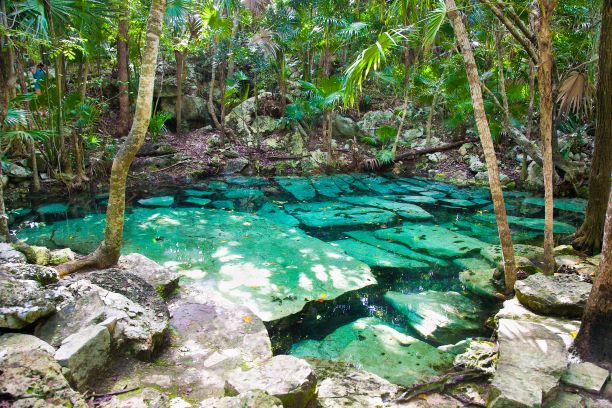
Cenote’s are often divided into three kinds: Open Cenote’s are like natural, open pools. Some of the open Cenote’s are also connected to an underground river passage. Semi-open Cenote’s have some parts that are exposed and some portions that are partially hidden by a cave. Closed Cenote’s are accessed via a land-level entrance and open up to an underground pool once you make your way in.
As you head south from Puerto Aventuras there are numerous Cenotes scattered along the coast and into the jungle. All of these are interesting, some are beautiful to swim and snorkel in, while others are better suited to visit as a scuba diver on a guided cavern tour. There is even a very nice one at Aktun-Chen that is not under water. However you enjoy them, do not leave the area without visiting at least one of these natural marvels. Please remember to help protect the fragile eco system by not wearing sunscreen lotion or mosquito repellent into the waters or touching the formations. You are not allowed, nor should you even contemplate entering a Cenote with scuba equipment unless you are with a certified cave or cavern guide.
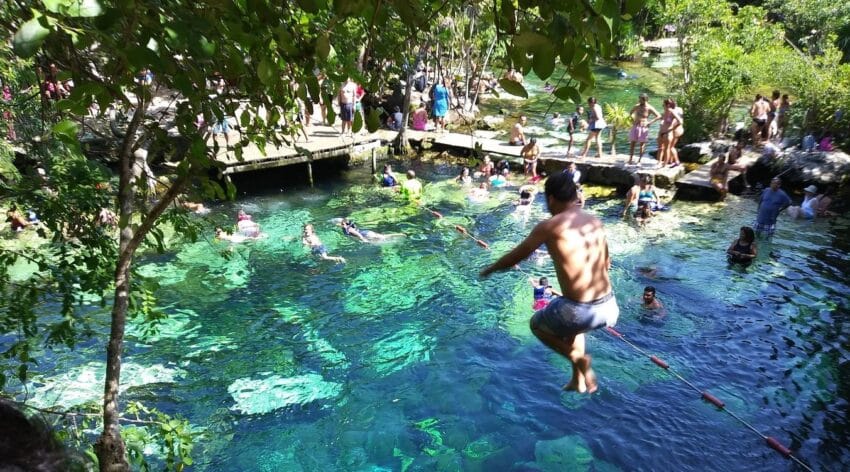
Cenote Cristalino
Cenote Cristalino is an open-type cenote that looks like a natural swimming pool. There are some portions of the cenote that are concealed beneath a rock that form like a mini cave. As such, there are cliffs that you can jump off to get into the water. And for those who like to dangle their feet on the water, do watch out for the fish that swim in the cenote – there are plenty of them!
Located on Highway 307, just 5 minutes south of Puerto Aventuras.
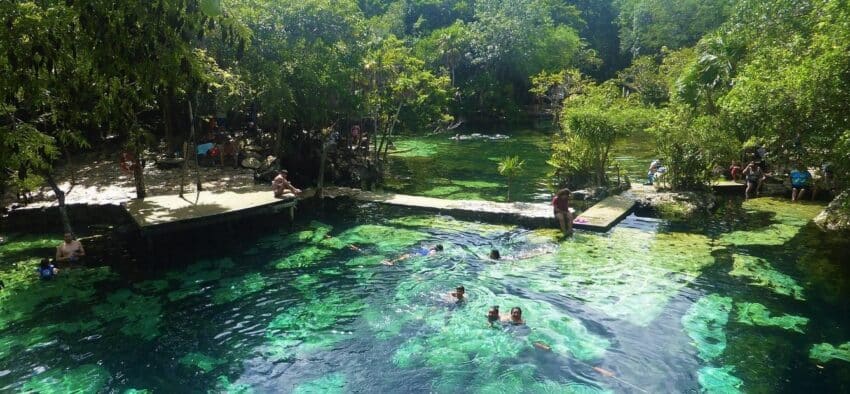
Cenote Azul
Cenote Azul is another great place to spend some time and chill. Cenote Azul is an open cenote, meaning it doesn’t have that dramatic ceiling, but you enjoy it in lush greenery around, open fully to the sky, and crystal clear water. It is a pretty big cenote, good for swimming and snorkeling, with a deeper part for jumping off a cliff.
Located on Highway 307, just 5 minutes south of Puerto Aventuras.
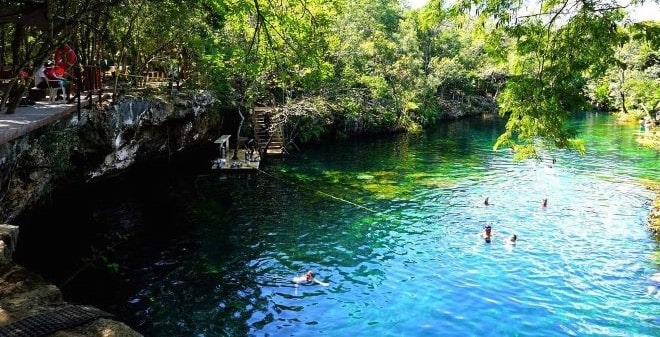
Jardin del Eden
Translated in English ‘Garden of Eden’, this place is a beautiful open, crystal-clear cenote surrounded by lush rainforest and one of the most popular cenotes in the Riviera Maya. It is a great place for snorkeling, natural fish spa, cliff jumping or just relaxing in a beautiful jungle surrounding. The cavern part of the cenote, also called Ponderosa, is a longtime favorite for scuba diving.
Located on Highway 307, just 5 minutes south of Puerto Aventuras.
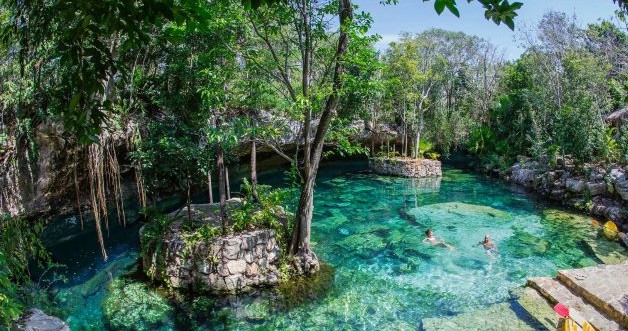
Ecopark Kantun Chi
Ecopark Kantun Chi is a park with five cenotes and an underground river. The park offers different routes, where you will learn about the Mayan culture and local flora & fauna. Compared to the cenotes mentioned above, Kantun Chi has the best facilities with a restaurant and well maintained grounds. However, while the cenotes are quite interesting to look at, they are not very inviting for swimming.
Located on Highway 307, just 5 minutes south of Puerto Aventuras.
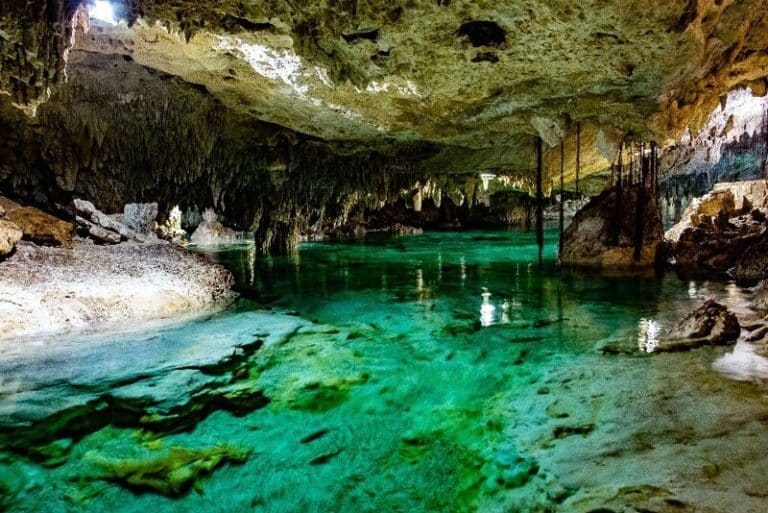
Aktun-Chen Cenote & Cave
This dry cave is incredible and allows those who do not snorkel or dive, the opportunity to experience the rare beauty of this underground world. This cave once provided protection from storms and hurricanes for the Maya. The one hour guided trip will lead you through the system along a trail illuminated with soft natural light to enhance the beautiful stalagmite and stalactite formations. The last chamber is very large and has a crystal clear blue pool of water with a bridge. The park also offers a wildlife zoo and ziplining.
Located on Highway 307, just 5 minutes south of Akumal.
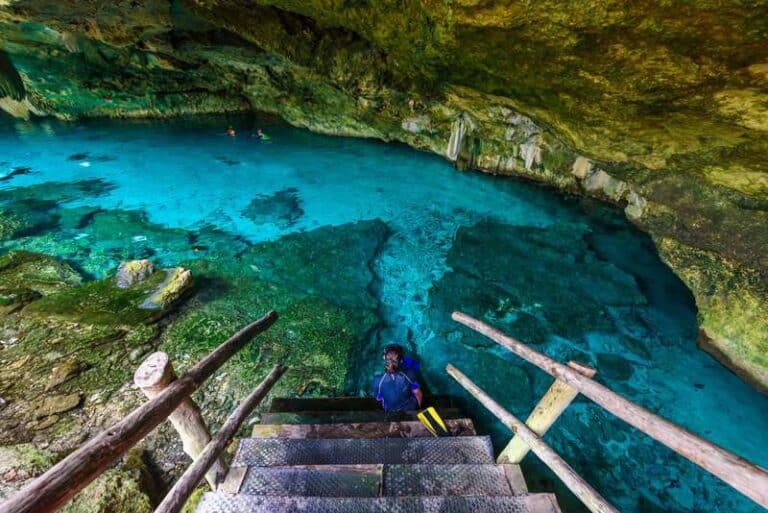
Dos Ojos & Hidden Worlds
Cenote Dos Ojos in Tulum might easily be the most famous cenote in the world. Translated in English ‘Two Eyes’, named after the two cenotes which do connect. Here you can experience one of the most magnificent underwater cavern ecosystems in the world, either snorkeling or scuba diving. You can also explore the “Bat Cave” without getting wet. This place is definitely worth a visit if you are interested in cenotes.
Located on Highway 307, some 10 minutes south of Akumal.
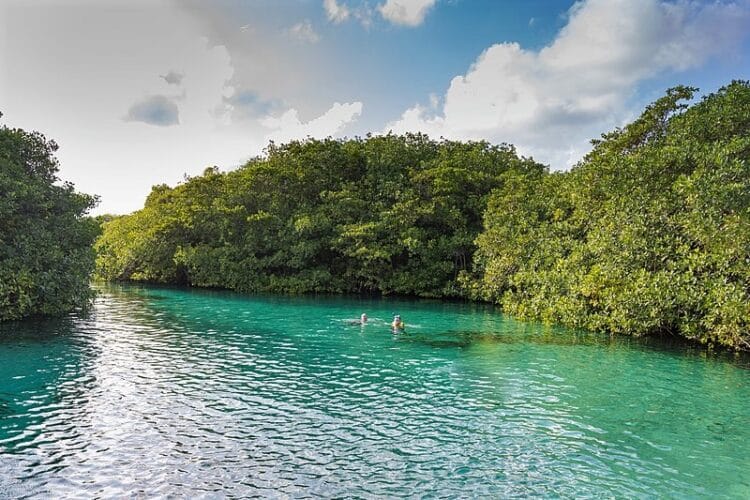
Cenote Manatee (aka Casa Cenote)
This river-like open cenote is one of the most unique and beautiful along the Riviera Maya. Named after the manatees that used to frequent the site, Cenote Manati is an excellent place to swim & snorkel, with both fresh and salt water fish. The unique location, just steps from the beach & ocean, including an on-site restaurant, which makes it a great day trip.
Located in Tankha Bay, 15 minutes south of Akumal.
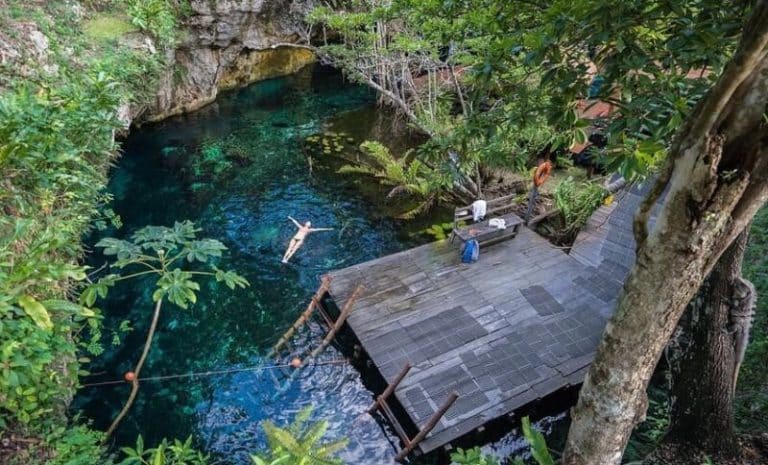
Grand Cenote
Gran cenote is a semi-open cenote in a beautiful jungle setting. It is popular for swimming and snorkeling because of the crystal clear turquoise water with stalactites and stalagmites. Both smaller fish and turtles are swimming in this beautiful cenote, from which you can reach the different depths of water via a wooden deck. The tropical lush surrounding gives the place a magical feel. This cenote is also popular for scuba diving.
Located on the road to Coba, 5 minutes west of Tulum.
